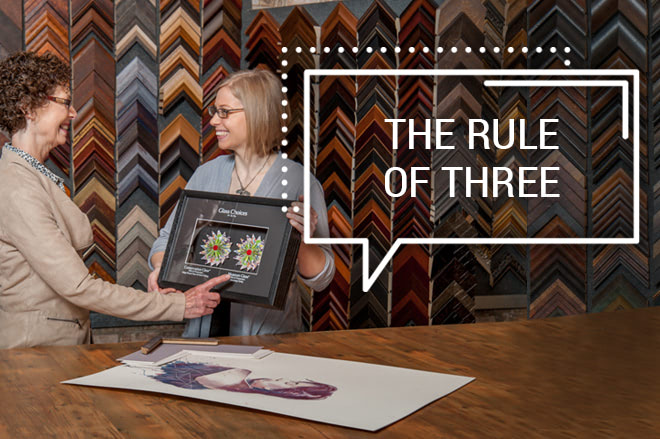Our last post covered how design driven sales can boost profits with small but impactful shifts at the design table. This is a great first step in strengthening profitability with upgraded glazing. For shops that are already comfortable with the design driven approach and have experience with customized pricing, adding another layer to the pricing strategy that addresses markups on premium materials can lead to even more success.
One very reliable pricing strategy I use with clients is what I call the Rule of Three. This strategy identifies appropriate markups for larger and upgraded projects to price them within reach of customers while still resulting in increased profits.
The Rule of Three Philosophy
The Rule of Three essentially enables a shop owner to generate three times the profit of standard materials when using premium materials. This creates a win-win scenario for the business owner and the customer, since the resulting selling price of the upgraded product will be lower than if the business owner used the same multiplier on both the standard and premium products. With a lower selling price, more customers will choose the premium product, resulting in increased profits for the business owner.
The formula for the Rule of Three is as follows:

Let’s take a look at an example of a standard and premium product using the same multiplier versus using the Rule of Three.
Using the example of a 16” x 20” piece of Conservation Clear® Glass, let’s say your cost is $3.76, and we determine a selling price (or retail price) of $26.32 using a multiplier of 7. If we have a cost of $17.27 for the same size piece of Museum Glass® and use the same multiplier to determine its selling price, the result is $120.89.
If we use the Rule of Three, we can bring that selling price down to something more comfortable for the customer but still make a good profit. Here is how it looks:
($26.32 — $3.76) x 3 = $67.68
$17.27 + $67.68 = $84.95
So the difference between using the same multiplier of 7 for both the standard and premium glazing and using the Rule of Three is nearly $36.00. In many cases, an amount like this makes the difference between buying the premium product or not. The business owner still makes three times the profit, and the customer gets to enjoy the upgraded product for less money.
With the price reduction in Museum Glass, the gap between Conservation Clear Glass and upgrading becomes narrower, putting the product within reach for more customers. I have developed a calculator for the Rule of Three that makes it very easy to customize pricing in this way. For more information on this and to learn about how I can help you determine your most profitable pricing, click here. Additionally, LifeSaver has incorporated the Rule of Three into their default pricing for all glazing products on its desktop system. This is available to all customers through a downloadable link.
In some cases, further adjustments can be made if certain premium products are in high demand in your market. For example, Optium Museum Acrylic® fills a pressing need in some areas. Custom frame shop owners in places like New York City, where most pieces are quite often subject to the rigors of delivery, regularly use acrylic on many pieces they sell due to its light weight and durability. Markets in the earthquake zone of the West Coast and hurricane-prone Southeast and Gulf Coast also tend to sell more acrylic. Shop owners in these areas can consider higher margins in response to the level of demand, but the Rule of Three can be a starting point for making those adjustments.
Applying this type of pricing strategy takes some effort, but it is well worth it when it results in increased profitability and customer satisfaction from experiencing the benefits upgraded glazing has to offer.
Share this Article:
This article is intended for educational purposes only and does not replace independent professional judgment. Statements of fact and opinions expressed are those of the author(s) individually and, unless expressly stated to the contrary, are not the opinion or position of Tru Vue or its employees. Tru Vue does not endorse or approve, and assumes no responsibility for, the content, accuracy or completeness of the information presented.
